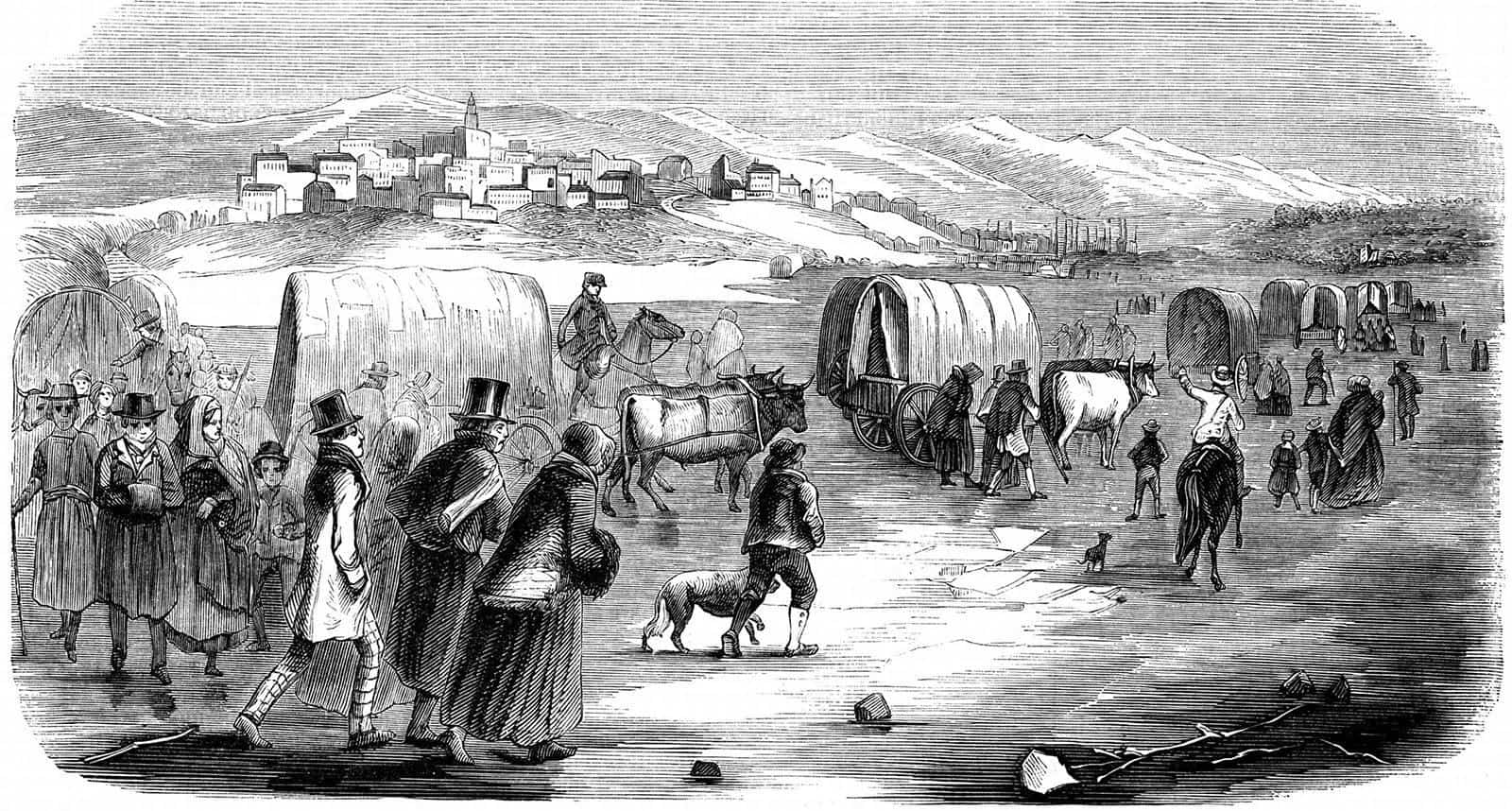Secrets Of Utah’s Mormon Trail Trading Routes

Ever wondered about the Mormon Trail and its hidden trading routes? This historic path, stretching from Illinois to Utah, holds tales of pioneers, perseverance, and commerce. As settlers moved westward, they established vital trading posts along the way. These posts became lifelines, offering supplies, rest, and news. Today, you can still trace these routes and imagine the bustling activity of yesteryears. Whether you're a history buff or just curious, exploring the Mormon Trail offers a unique glimpse into the past. Ready to step back in time and uncover the secrets of these trading routes? Let's dive into the history and significance of this iconic trail.
The Historic Mormon Trail
The Mormon Trail is a path rich with history, stretching from Illinois to Utah. Along this route, pioneers faced numerous challenges but also established key trading posts. These trading routes became lifelines for settlers, offering supplies, rest, and a sense of community. Let's explore some of the most significant trading spots along the Mormon Trail.
Key Trading Posts on the Mormon Trail
Trading posts were essential for the survival of pioneers. They provided necessary supplies, food, and sometimes even medical aid. Here are some of the most notable trading posts along the Mormon Trail.
Winter Quarters, Nebraska
- Located near present-day Omaha, Winter Quarters served as a major stop for Mormon pioneers. Here, they could rest, repair wagons, and stock up on supplies before continuing their journey westward.
Fort Kearny, Nebraska
- Established in 1848, Fort Kearny was a crucial resupply point. It offered food, ammunition, and other essentials. The fort also provided a sense of security for travelers.
Fort Laramie, Wyoming
- This historic fort was a key trading post where pioneers could trade goods, rest, and gather information about the trail ahead. It was a bustling hub of activity and commerce.
Fort Bridger, Wyoming
- Founded by Jim Bridger and Louis Vasquez, Fort Bridger was an important stop for pioneers. It offered supplies, blacksmith services, and a place to rest before tackling the rugged terrain of the Rocky Mountains.
Natural Landmarks Along the Trail
The Mormon Trail is not just about trading posts; it also features stunning natural landmarks that guided and inspired pioneers. These landmarks served as navigational aids and provided much-needed morale boosts.
Chimney Rock, Nebraska
- This iconic rock formation was a major landmark for pioneers. Its unique shape made it easily recognizable and signaled that travelers were on the right path.
Scotts Bluff, Nebraska
- Another significant landmark, Scotts Bluff, offered a panoramic view of the surrounding plains. It was a welcome sight for weary travelers.
Independence Rock, Wyoming
- Known as the "Great Register of the Desert," Independence Rock is covered in the names of pioneers who passed by. It was a popular spot for travelers to rest and leave their mark.
Challenges Faced by Pioneers
Traveling the Mormon Trail was no easy feat. Pioneers faced numerous challenges, from harsh weather conditions to difficult terrain. Understanding these challenges helps us appreciate the resilience and determination of those who made the journey.
The Rocky Mountains
- Crossing the Rocky Mountains was one of the most daunting tasks for pioneers. The steep, rugged terrain tested their endurance and resourcefulness.
The Great Salt Lake Desert
- This arid, inhospitable region posed significant challenges. Pioneers had to ensure they had enough water and supplies to make it through this harsh landscape.
Weather Extremes
- From scorching summers to freezing winters, the weather along the Mormon Trail was unpredictable and often dangerous. Pioneers had to be prepared for all conditions.
The Legacy of the Mormon Trail
The Mormon Trail is more than just a path; it represents the spirit of perseverance and community. The trading posts and natural landmarks along the way tell the story of a people determined to find a new home. Today, these sites serve as reminders of the incredible journey undertaken by the Mormon pioneers.
Discovering Utah's Hidden History
Exploring Utah's Mormon Trail trading routes reveals a rich tapestry of history and culture. These paths, once bustling with pioneers, traders, and settlers, offer a glimpse into the past. Walking these trails, you can almost hear the echoes of wagon wheels and the chatter of early travelers. The landmarks and historical sites along the way tell stories of resilience, faith, and community. Whether you're a history buff or just love a good adventure, these routes provide a unique way to connect with Utah's heritage. So, lace up your hiking boots, grab a map, and set out to uncover the secrets of the Mormon Trail. Each step you take is a step back in time, offering a deeper appreciation for the journey that shaped this remarkable region.

